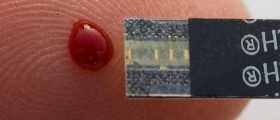
Diabetes mellitus, or simply diabetes, is a metabolic disease characterized by elevated levels of blood sugar. Diabetes occurs either because the body fails to produce enough insulin, or because bodily cells do not respond properly to the produced insulin. Insulin is actually a hormone responsible for the carbohydrate and fat metabolism in the body. One of the most important roles of insulin in the body is to remove the excess glucose (sugar) from the blood. This is why the blood sugar levels in patients with diabetes are elevated.
Types of diabetes
There are three principal types of diabetes. Type 1 diabetes occurs when human cells fail to produce insulin. These patients will need to inject insulin in their body in order to function normally. Type 2 diabetes occurs when the body cells fail to use insulin properly. Gestational diabetes is the third kind that affects the pregnant women who have never had diabetes before.
Symptoms of diabetes in women
Signs and symptoms of diabetes in women may dramatically vary, depending on what actually causes the disease. Whatever is the case, some symptoms of diabetes in women will be different than those in men, since this disease affects women on many different levels.Typically, women will be extremely thirsty and may have increased need to drink a lot of water. Consequently, women will urinate more frequently.
Frequent urination is actually one of the most common symptoms in women. Women will have visual problems such as blurred or foggy vision. Their blood circulation might be very poor and their small wounds and sores may take longer than normal to cure. Women may experience weight loss or weight gain, and severe changes in appetite. Women with diabetes are more prone to yeast infections, especially vaginal candidiasis. They may also be prone to urinary tract infections and may complain about discomfort and pain during the sexual intercourse. Moreover, the skin around the vaginal area may be itchy and dry, making the vaginal infections more frequent.
Prevention of diabetes
Currently, there is no known way to prevent diabetes type 1. However, diabetes type 2 can be prevented by making simple lifestyle changes. Regular exercise is the best way to prevent diabetes by training the body to use insulin more efficiently. It is also recommended to maintain a healthy weight and lose the excessive pounds to improve insulin sensitivity. It is also recommended to quit smoking and include nuts and peanut butter in the regular daily diet.
- www.womenshealth.gov/a-z-topics/diabetes
- www.nhs.uk/conditions/type-2-diabetes/symptoms/
- Photo courtesy of Kauczuk by Wikimedia Commons: commons.wikimedia.org/wiki/File:Diabetes_icon.gif

















Your thoughts on this
Loading...